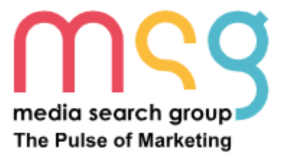The Ultimate Health Insurance Content Marketing to Attract, Convert, and Retain Members
Your future member is not clicking an ad and buying a health insurance plan on the spot. They’re Googling. Reading. Asking Reddit. Watching videos. They’re trying to understand premiums, deductibles, copays, PPOs, HMOs, ACA rules, and mental health coverage.
And if they don’t learn it from you, they’ll learn it from a competitor who explains it better.
That’s where health insurance content marketing changes the game - and where Health Insurance SEO Services play a crucial role in making sure your valuable content gets discovered.
At Media Search Group, we provide specialized health insurance content marketing services in New York, Des Moines, Tampa, Boston, Anchorage, Newark, St. Louis, Washington D.C., Miami, Phoenix, Philadelphia, and all other cities across and beyond the U.S.
We audit your website, analyze your competitors, and gather industry insights to create a powerful health insurance content strategy. With us, you will get:
- Well-researched content
- Affordable content packages
- Dedicated account manager
- Monthly transparent reports
Ready to create a content strategy for health insurance that sells?
Or, are you interested in getting to know more about health insurance content marketing? keep reading.
The Current Scenario of Health Insurance Marketing
We're no longer in a market where running a banner ad saying "Affordable Health Plans for You" gets the job done. Let's walk through the current state of the health insurance marketing industry.
People are no longer buying policies. They're buying clarity.
The modern health insurance buyer, whether an individual, a family head, or a small business owner, is overwhelmed.
They want someone to:
- Cut through the jargon.
- Speak to their life situation.
- Tell them what to do.
70% of people say they trust branded educational content. (Source: Nielsen)
That means every time you skip content and run another ad, you're giving up market share.
Even TV spots, which cost tens of thousands, are now just background noise while your audience scrolls their phone. So, where is their attention?
Blogs. Articles. Google Searches. YouTube. Podcasts. Emails they opted into.
Thus, content marketing is the key to getting their attention and helping them learn all about health insurance.
Why Content Marketing Matters for Health Insurance Companies
Health insurance is complex, regulated, and also emotional. Your audience is trusting you with their health, their finances, and their future.
Let's unpack the real value behind content marketing for health insurance.
1. Build Trust in a Complex, Regulated Industry
Most people don't understand health insurance. They fear it.
- They're afraid of surprise bills.
- They don't know if their doctor is in-network.
- They've been burned by bad experiences before.
And when people are confused, they do one thing: nothing.
This is why clear, strategic content isn't just a nice add-on, but it's mission-critical.
When you publish blog posts that break down concepts like "deductibles vs. copays" in plain English...
When your landing page helps them understand how to choose a Medicare Advantage plan based on location and budget...
When your case studies tell real stories about members saving thousands of dollars...
You become a trusted health insurance advisor instead of being a faceless brand.
2. Educate to Empower: The Patient Is Now the Customer
Today's member is not passive. They're informed. They're comparing.
They're looking for:
- The difference between bronze, silver, and gold plans
- What ACA coverage includes for mental health
- How family plans work with FSA and HSA options
- Which insurance is best for self-employed consultants
If you're not actively answering those questions through your content, you're invisible.
But when you do, you don't just attract traffic. You attract the right audience at the right stage of the funnel.
3. Compliance Doesn't Have to Be Cold
We know health insurance content must meet strict compliance rules. That doesn't mean it has to sound like a government brochure.
Without violating compliance, your content can be:
- Clear
- Empathetic
- Helpful
- Actionable
In fact, the best health insurance marketing strategy combines authority with accessibility.
How Content Marketing is Different in the Health Insurance Industry
You're dealing with human lives, regulations, and trust. That changes everything.
Content marketing for health insurance is about precision, empathy, and legitimacy. And it's a tightrope walk between educating and overwhelming, informing and staying compliant, marketing and genuinely helping.
High-Authority Topics Need Clarity, Compliance, and a Human Tone
In most industries, marketers can speak in metaphors or rely on emotion-heavy language. But in health insurance? That's a legal field.
Every piece of content must walk the line between being informative and being legally safe. The wrong phrasing in a blog post or a misleading promise on a landing page could result in penalties or, worse, lost trust.
When creating strategies for health insurance content marketing, you:
- can't just say "we're the best" — you need to prove it.
- can't be vague about costs — you need to spell it out clearly.
- can't rely on jargon — you need to translate the complex into real-world language.
So, write clearly, stay compliant, and sound human.
You're Not Just Ranking; You're Building Credibility
In healthcare content, SEO isn't the end goal. Trust is.
Yes, your article on "how to compare HMO and PPO plans" should rank on Google. But that's just step one.
If your tone is cold or your content is stuffed with keywords but says nothing meaningful, readers leave.
When your site becomes the place they go for honest answers, you become a trusted source.
In the health insurance industry, that trust turns into leads, policyholders, and long-term retention.
Benefits of Content Marketing for Health Insurance Companies
A well-crafted content marketing strategy for health insurers delivers not in months, but in momentum. Here's the many benefits of health insurance content marketing:
1. Improved Organic Visibility with SEO
When you publish educational, targeted blog posts that answer real questions like "What's the difference between Medicare and Medicaid?" or "How much is health insurance per month in Texas?", Google notices. And so do your prospects.
Imagine being on page 1 every time someone in your area searches for health insurance. That is strategic content doing its job 24/7.
2. Lower Cost Per Acquisition (CPA)
Traditional marketing drains budgets.
$20 per click. $200 per lead.
Sound familiar?
Now compare that to an SEO-optimized article that brings in leads month after month.
No extra cost and extra budget. You enjoy compounding returns when content marketing for health insurance is executed right.
3. Better Lead Qualification
Content helps you filter out the curious about health insurance and attract the committed.
Someone who read your 1,000-word guide on comparing Medicare Advantage plans? That's not a cold lead. That's a hot prospect who is getting educated, engaged, and ready to act.
4. Enhanced Member Education
People don't understand deductibles, co-pays, or coinsurance and, thus, feel frustrated. When your blog explains them in plain English, you become more than a provider and a guide. You become their source of clarity in a complex world.
5. Positioning Your Brand as an Expert
When you interview doctors, publish explainers, and offer case studies, you don't just look like a health insurance company. You look like the health insurance company. The one who knows and can be trusted.
6. Voice Search Discoverability
Over 153.5 million U.S. adults use voice search daily. Meaning, they're not typing; they're asking. (Source: Statista)
"Hey Siri, what's the best health insurance for freelancers?"
"Alexa, is dental covered in Medicare?"
With the right conversational content, optimized for these queries, you'll be the voice they hear back.
7. Member Retention and Satisfaction

Acquiring a new member costs 5x to 25x more than keeping one. (Source: Harvard Business Review)
So don't just sell. Support. With onboarding guides, annual reminders, mental health tips, and answers to post-enrollment questions, your members stay informed, valued, and loyal with informative health insurance content.
Happy policyholders are the ones who renew, refer, and rave.
The Best Types of Content for Health Insurance Businesses
If you want to attract, convert, and retain with precision, these are the most effective content formats for health insurance:
1. Blogs
Don't focus on generic posts. Instead, your blog should be a library of concepts that your target audience researches. When done right, blogs are the #1 driver of SEO traffic and trust.
Write about:
- Policy breakdowns in everyday language. "What is coinsurance, and when do you pay it?"
- Plan comparisons that actually help. "Is an HMO or PPO better if I travel a lot?"
- Seasonal guides to stay relevant. "Health insurance checklist before open enrollment."
This way, every blog/article becomes an entry point not just for leads, but for loyalty.
2. Landing Pages
Blogs attract the right audience, but landing pages convert. In health insurance content marketing, these pages must be very specific and must speak to the potential policyholders directly.
Create separate landing pages for:
- Medicare Advantage plans
- Short-term health insurance
- Employer group plans
- State-specific or city-targeted offers (for local SEO)
When writing landing pages for health insurance, explain who it's for, why it matters, and what they'll gain, in addition to describing the health plan.
3. Case Studies
Remember the fact that numbers tell, but stories sell.
A family saved $3,200 with the right plan? Tell that story.
An employer who onboarded 200 staff in 3 days? Share the steps.
Make it easier for your target audience to understand things better with real-life stories in a way that they can relate to.
4. Social Media
Social media platforms like Facebook, Instagram, YouTube, and even LinkedIn are where you humanize your brand. Instead of posting overly polished insurance jargon, you need to post:
- Video explainers for complex topics.
- Infographics about benefits people forget they have.
- Polls and quizzes that boost interaction.
- Mental health tips that show you care.
- Reels/shorts with agents answering common questions.
Your audience is scrolling. Make them stop. Make them think. Then, make them act.
How to Create a Proven Health Insurance Content Strategy
In the health insurance world, where every search can be a life decision, you need more than just good writing. You need a health insurance content marketing strategy framework built to match your audience's mindset, needs, and moments of decision.
Here's how to do it step by step.
1. Start with Bottom-of-the-Funnel (BOFU) Content
BOFU content targets people who are ready to act. They've done the research. Now they're comparing options, weighing premiums, and figuring out what's best for them.
For this type of insurance content, target keywords like:
- "Best health plan for senior citizens"
- "Health plans for young adults"
- "Compare PPO vs HMO"
- "Affordable family insurance plan Texas"
These people aren't information seekers. These are decision makers.
2. Build Middle & Top Funnel Next
Once your foundation is set with BOFU content for health insurance, start attracting your future buyers.
Top-of-Funnel (TOFU) content brings awareness. These readers are researching, yet not ready to buy, but curious. For them, think blog titles like:
- "What is a deductible in health insurance?"
- "How does coinsurance work?"
They may not need you today, but they'll remember you tomorrow.
Middle-of-Funnel (MOFU) content helps them evaluate. Here, you guide them toward clarity:
- "How to choose the right insurance plan for your family"
- "Should I get short-term health insurance or ACA?"
You're not just educating them, you're gently nudging them closer to that "Get a Quote" button.
3. Interview Experts & Medical Advisors
In health insurance, authority isn't optional; it's everything.
Back up your content with real voices:
- A licensed health insurance agent explaining open enrollment timelines
- A family doctor breaking down pediatric coverage
- A financial advisor discussing the tax implications of HSAs
These voices add credibility and build trust, and then slowly drive conversions.
4. Map Content to Funnel + Pain Points
In health insurance content marketing, generic content often fails, but personalized journeys win. Create segmented content paths for different audiences:
- Students want simple, low-cost plans with flexible coverage
- Young families worry about pediatric care, maternity, and deductibles
- Small business owners need group plans with tax advantages
Every audience has different questions. Your content should offer tailored answers at every stage of their journey.
How to Optimize Health Insurance Content for SEO and Voice Search
Optimizing health insurance content for SEO and voice search means speaking the language of both Google and your audience.
Here's how:
Answer "People Also Ask" and FAQ-style Queries
Open any health insurance-related search, and you'll see it: Google's "People Also Ask" box.
These questions are the most important to know what your audience is searching for. They reflect the real, raw language your audience uses.
Build your blog content to directly answer these questions in clear, concise paragraphs.
- "What is coinsurance in health insurance?"
- "Is dental covered under HSA?"
- "How do out-of-pocket maximums work?"
Better yet, create FAQ blocks on every service page. These help users and increase the chances of showing up in Google's featured snippets.
- "How much is health insurance per month in Texas?"
- "What's the difference between Medicare and Medicaid?"
- "Can I get health insurance if I'm self-employed?"
Use Conversational Long-Tail Keywords
Voice search changed everything. People don't search "best insurance plan NY."
They ask: "What's the best insurance plan for self-employed people in New York?"
So, your content should match that natural tone.
Incorporate long-tail, question-based keywords like:
This makes your content more discoverable not just in Google, but also in voice assistants like Siri, Alexa, and Google Assistant.

Include Schema Markup for Articles and FAQs
Schema is a technical way to tell search engines exactly what your content contains, and it can visibly boost your search presence.
Add structured data for:
- Articles and Blog Posts
- FAQ sections
- Breadcrumb navigation
- Local business info (address, phone, hours)
When done right, schema helps your listings stand out with rich snippets, increasing click-through rates and visibility.
How to Measure the Success of Health Insurance Content Marketing Campaigns
Here's how to know if your health insurance content is actually delivering ROI and not just impressions.
Organic Traffic and Rankings
First stop: Google Analytics and Search Console.
Are your blog posts climbing the ranks?
Are you getting traffic from non-branded terms like "compare HMO vs PPO" or "best short-term health insurance Florida"?
The more keywords you rank for, the more doors you open to new leads.
Click-Through Rate (CTR) from Google
Ranking isn't enough. People need to click.
Monitor your pages' CTR in Search Console. If you're ranking but not getting clicks, tweak your:
- Meta titles
- Descriptions
- Featured snippets
Remember: your search listing is your first impression. Make it count.
Conversion Rate from Blog to Lead
Track how many visitors go from blog to quote request, sign-up, or contact form.
Pro tip: Use clear CTAs in every post, like:
- "Compare Plans Now"
- "Talk to an Agent"
- "See What You Qualify For"
Tie content to a lead magnet like a downloadable plan comparison guide to improve conversions.
Member Retention Improvement
Retention isn't just about customer service. It's also about ongoing value.
- Do members come back to read your blogs?
- Do email newsletters with educational content reduce churn?
- Are your onboarding guides increasing first-year renewals?
Track renewal rates before and after implementing content. The correlation is often stronger than you'd expect.
Time on Page and Bounce Rate
These metrics tell you if your content resonates.
- A low bounce rate + high time on page = engaging, relevant content
- A high bounce rate = misaligned or confusing content
Use this data to guide content updates, improve internal linking, or refine your headlines.
What High-Converting Health Insurance Content Looks Like
Whether it's a blog, landing page, or email series, here's what separates high-converting content from forgettable fluff:
1. Engaging, Problem-Led Headline (H1) With Primary Keyword
Your headline is your first and maybe only shot at grabbing attention. Make it count.
Lead with a real pain point and include your primary keyword.
Bad: "Understanding Health Insurance"
Better: "Confused by Health Insurance? Here's How to Pick the Right Family Plan"
The second version doesn't just inform, it promises relief.
2. Intro With Clear Pain Point and Promise
People don't read intros for fun. They're looking for a reason to stay. Your first 2 to 3 sentences should:
- Acknowledge a common struggle ("choosing a health plan is overwhelming")
- Offer a benefit or outcome ("this guide breaks it down in plain English")
- Set expectations ("we'll walk through deductibles, copays, and plan types step-by-step")
This is where trust begins.
3. H2s With Semantic Keyword Variation
For clarity and context, use H2s that reflect semantic keyword variations, like:
- "How to Choose Between PPO and HMO"
- "What to Know Before Enrolling in a Health Plan"
- "Best Short-Term Insurance for College Students"
This helps search engines understand your topic deeply and improves rankings for related terms.
4. Short, Clear Paragraphs and Bullet Lists
Health insurance is complex. Your writing shouldn't be. Break down ideas into:
- 2 to 4-sentence paragraphs
- Bullet points for comparisons and key takeaways
- Bold sub-points for emphasis
Make it skimmable, readable, and respectful of your audience's time.
5. Credible Links to Government or Insurer Sources
Link out to:
- Healthcare government websites
- State insurance departments
- Trusted carriers and policy PDFs
These references elevate your authority and reassure readers that they're getting accurate information.
6. CTA at Every Scroll Depth
Use CTAs throughout long-form content. Make them relevant to the context:
- After a benefits comparison? → "See Plans Available in Your Area"
- After cost breakdowns? → "Estimate Your Monthly Premium Now"
- Reading about enrollment? → "Talk to a Licensed Agent"
You don't need to shout. You just need to invite the next step often and naturally.
Build Trust and Visibility with Strategic Content Marketing for Health Insurance
An effective Content Marketing strategy helps health insurance providers connect with potential policyholders by delivering valuable, informative content. It starts with in-depth Keyword Research for Health Insurance to target high-intent queries and improve organic reach. Enhance your local presence with Local SEO and accurate GBP Optimization to appear in map packs. Support your content with solid Technical SEO to ensure fast load times and mobile responsiveness. Strengthen domain authority and visibility through strategic Link Building that boosts your content’s reach.
Get Professional Help to Make the Most Out of Your Health Insurance Content
Content that converts, educates, and retains is built with strategy, expertise, and consistency. This is possible with the help of a health insurance content marketing agency, which has done this for other insurance companies.
At Media Search Group, we'll help you write the content that grows your health insurance business.
If you want to:
- Attract more qualified leads
- Build long-term member trust
- Reduce churn and increase renewals...
Then it's time to get in touch with our experts who know the healthcare space.
Ready to Build a Performance-Driven Health Insurance Content Strategy?
Let’s help you make your health insurance brand trusted with helpful, engaging content.








